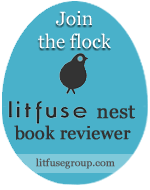"In general, shorter is better. If you can encapsulate your idea into a single captivating sentence, you're halfway home."—Len WeinFrom beginning writers to highly-educated professionals, some people write inordinately long sentences, as in lose-my-interest-length. I worked for an organization that thought good writing was, “How many thoughts and ideas can I compress into one sentence?”
As trash-compactor writers, their jam-packed manuscripts often contained polysyllabic words and long, complex sentences. Three or four complete sentences and concepts packed into one sentence was not unusual—it was the norm. I recall one 63-word opening hook.
Untangling a difficult-to-read manuscript exhausts both the reader and editor. ‘Readability’ does not mean trying to impress others with a massive brain dump in one sentence or paragraph. Readability, the writing quality of your sentences, makes it easy (or difficult) to read and understand.
How do you write easy-to-digest, understandable sentences on the first reading? The bottom line? Use simpler diction. Write short sentences. Like American writer, Janet Flanner said, “I keep going over a sentence. I nag it, gnaw it, pat and flatter it.”
Tips to Nag, Gnaw, Pat, and Flatter Your Sentences
Write readable sentences.
- Reader’s Digest length sentences: 5-7 words.
- The easiest sentence to read? 8 words.
- 1-20 words: easy to read.
- 21-25 words: easy to understand.
- 26-29: difficult to follow.
- 30+ words: confusing.
- A string of short sentences often sound childish, choppy, tedious, and difficult to understand.
- Use short, punchy sentence as a hook to stress one strong idea.
- Maximize and emphasize crucial points and critical information.
- Save for important statements.
- A string of long sentences often sounds boring or unclear.
- Long sentences annoy readers.
- Break a sentence of more than 20 words into two sentences.
- Longer sentences can complicate the story in places where simplicity is more effective.
- Long sentences incorporate information and coordinate ideas.
- Vary sentence length and structure to create strong rhythm.
- Vary sentence structure openings. Too many similar beginnings make reading tedious.
- Write sentences in a logical or chronological progression of thought.
- Begin each sentence with a different word. Don’t start two or more sentences with the same word.
- Keep an eye out for missing periods, weird commas, closing quotes, and opening quotes.
- Delete exclamation points.










3 comments:
Such a good post.
(Four words.)
I appreciate your post, Scoti. Your practical ideas are just what I need. :) (Are smiley faces allowed? :)).
Beth, I laughed out loud at your comment. Jeanne, your comment made me smile. So here's a smiley face back at you.
Post a Comment